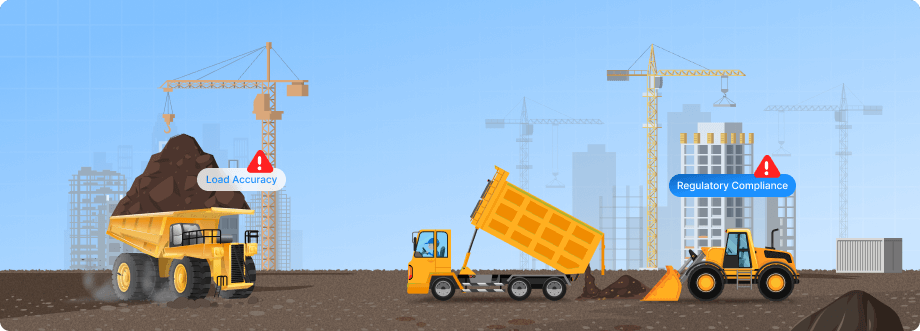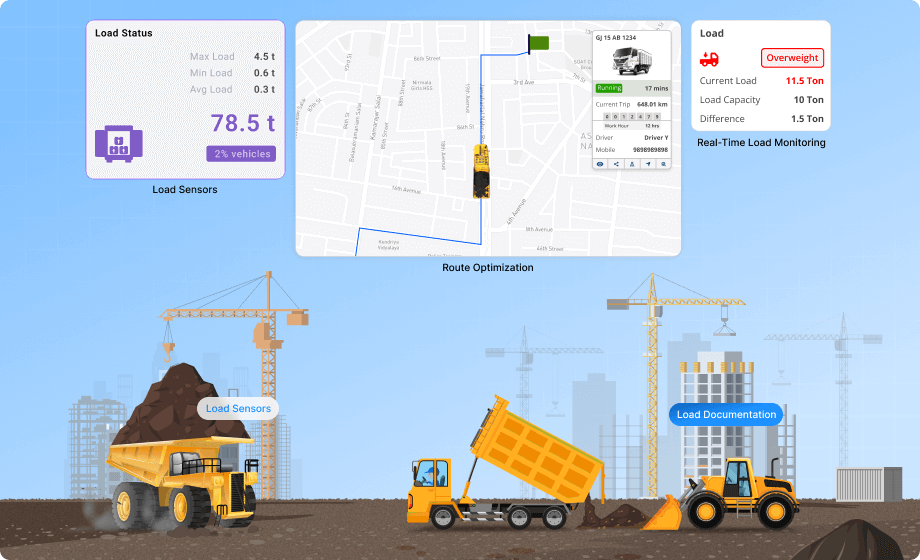Load monitoring is an essential component of the construction industry, where the weight of the load carried by a crane or other lifting equipment must be monitored to ensure safety and prevent accidents. Load monitoring systems can provide accurate and real-time information about the load being lifted, ensuring that it is within safe operating limits.
Keeping Construction Sites Safe with Load Monitoring Technology
Introduction
Challenges
Construction companies often face various challenges when it comes to managing loads in their fleet of vehicles:
- Load Accuracy: Without real-time monitoring, it’s challenging to ensure that each vehicle is carrying the correct and safe load, leading to potential overloading or underloading.
- Regulatory Compliance: Construction vehicles must adhere to strict weight regulations to ensure road safety and compliance with local laws. Monitoring load weights manually can result in unintentional violations.
- Resource Optimization: Efficiently allocating and distributing loads to different construction sites is essential to minimize transportation costs, reduce fuel consumption, and optimize vehicle usage.
Solution
To address these challenges, construction companies can implement load monitoring software tailored to their specific needs:
- Load Sensors: Load sensors are installed on construction vehicles to measure the weight of the load in real-time. These sensors are designed to withstand rugged construction environments.
- Real-time Load Monitoring: The load monitoring software collects data from the sensors, providing real-time visibility into load weights and distribution. Fleet managers can access this information remotely through a user-friendly interface.
- Load Compliance Alerts: The software is configured to generate alerts when a vehicle approaches or exceeds weight limits defined by regulations. These alerts are sent to fleet managers, allowing them to take immediate action to prevent compliance issues.
- Route Optimization: Construction fleet managers can use the software to optimize routes and schedules based on real-time load data. This helps in efficient load distribution and minimizes unnecessary trips.
- Load Documentation: Load monitoring software often includes the capability to store load documentation, such as load tickets, bills of lading, and weight certificates. This ensures proper record-keeping for regulatory compliance.
Results
- Safety: By using load monitoring software construction companies ensured the safety of their workers and equipment.
- Reduced Maintenance Costs: Load monitoring helped optimize the use of the equipment and reduced maintenance costs by analyzing data from load sensors to identify potential issues and make informed decisions.
Let’s Move Forward, Together
Share your details and we’ll guide you from here.


